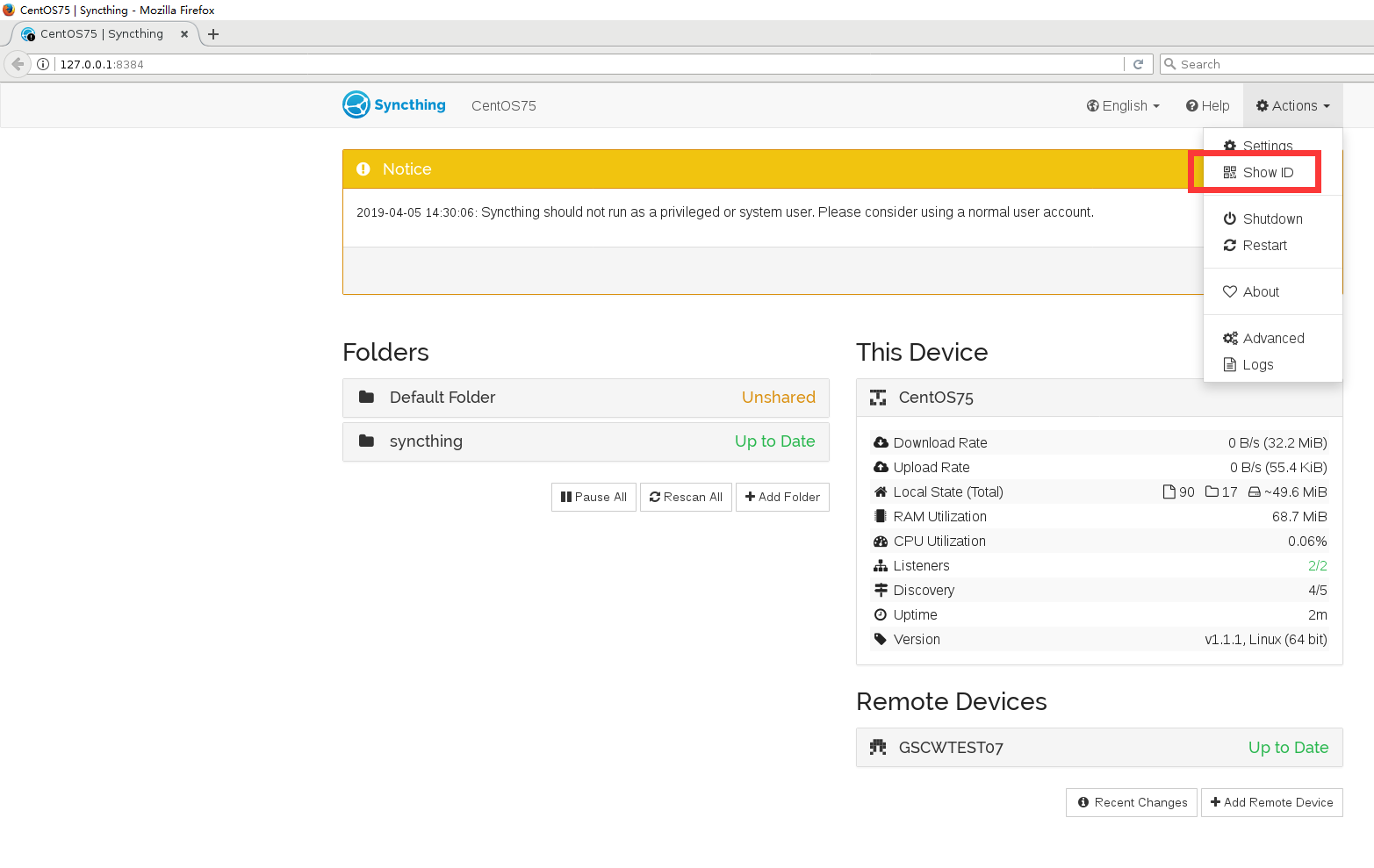

We have opened a corresponding issue in the syncthing project, however, there has been no progress as of now (since the beginning of July). This bug manifests itself when working with large folders (with a large number of files and folders inside).
Syncthing kubernetes windows#
Syncthing kubernetes driver#
Ksync only supports overlay2 as a storage driver for Docker.Here is our experience with ksync (and some useful suggestions): It will look for a pod with an app=backend label and will try to sync the /home/user/myproject/ local directory to the /var/www/myproject/ directory in the php container. … will create a watcher called myproject. For example, the following command: ksync create -name=myproject -namespace=test -selector=app=backend -container=php -reload=false /home/user/myproject/ /var/www/myproject/ It watches config files and launches syncthing to manage the actual file syncing to the cluster.įinally, you need to select folders for syncing to the cluster. The developer then runs ksync watch on a local machine. It helps to monitor the state of the filesystem of a selected container. Ksync solves this problem.ĭuring initialization with ksync init, the DaemonSet controller is created in the cluster.
Syncthing kubernetes code#
This tool is perfect for developers that use scripting languages whose major hurdle is delivering code into a running container. Ksync helps developers to sync files between a local folder and a folder in the container of a Kubernetes cluster. GH brief stats: 595 stars, 364 commits, 11 contributors.Idea: Almost instant synchronization of code with the container in the cluster.

As a popular alternative to Telepresence, you might also consider Skaffold described below. This tool is hosted among CNCF Sandbox projects. In general, we advice Telepresence to some of our customers (developers) and they are pretty happy with that. Also, Telepresence has some issues with volume mounts under Windows, and this could be a major obstacle for developers accustomed to this OS. However, there are some disadvantages: high requirements for stability and speed of the network connection which is especially evident for high-RPS and heavy-traffic applications. The advantages of running containers locally are many: the convenience of work, instant results, ability to debug an application habitually. Such an approach allows for fully local development via modifying files in your favorite IDE: you will see results immediately. In this case, all traffic from the computer to the cluster and vice versa goes through the proxy. Telepresence allows to run an application container on a local user machine. GH brief stats: 2213 stars, 2735 commits, 36 contributors.Idea: Transfer an application to a local machine for developing and debugging.Thus, it’s expected this plugin will be replaced by the native command ( kubectl debug ) soon. It’s also worth mentioning that the latest Kubernetes release - v1.16 - has brought the “ ephemeral containers ” feature (currently in alpha) that implements pretty similar functions to the core. The tool is simple and efficient and might be quite useful for developers. You can also enter the process container by executing chroot /proc/PID/root - this option is very convenient when you need a root shell in the container whose manifest has securit圜nAs set. With it, you can debug all aspects of pod’s operation: check the network, listen to network traffic, diagnose the process that you are interested in via strace, etc. The new container will share namespaces with the target container(s). This kubectl plugin allows you to run an additional container in a pod of your interest. GH brief stats: 782 stars, 57 commits, 12contributors.Idea: Add your container to the pod to see what’s happening inside.So here is a short review of various tools that make life easier for a common developer that has its code running in the pods of a Kubernetes cluster. That’s why we see a lot of new Kubernetes tools that help even the most old-school developers solve their problems while allowing them to focus on the global picture. He is far less concerned about deploying it to Kubernetes as well as testing and debugging it there after making some even the smallest changes. The common programmer primarily cares about its code: the architecture, the quality, performance, and even elegance. Containers and orchestrators facilitate scaling of projects of any complexity, simplify the release of new versions, making them more reliable… However, they also pose additional challenges for developers. A modern approach to operation solves many challenges that businesses face today.


 0 kommentar(er)
0 kommentar(er)
